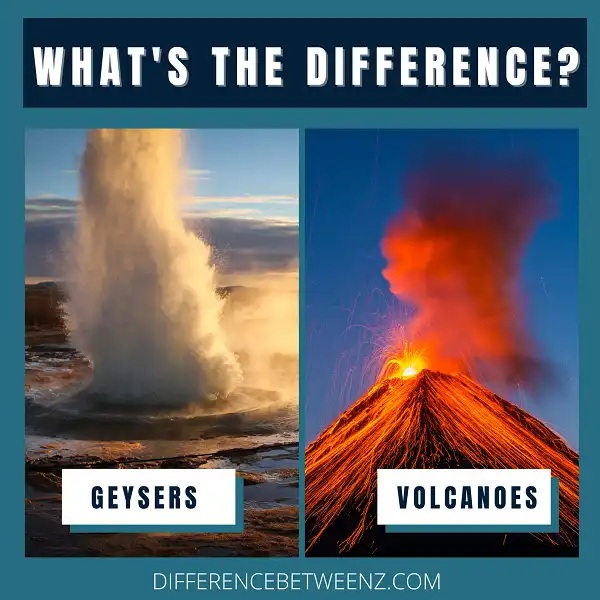What are the differences between geysers and volcanoes? Many people may not know the answer to this question. Geysers are fountains of water that shoot up from a hole in the ground. Volcanoes, on the other hand, are mountains that erupt ash, gas, and lava. Let’s take a closer look at these two geological features.
What are Geysers?
Geysers are hot springs that occasionally erupt, shooting water and steam into the air. They are found in areas where there is a lot of volcanic activity, such as Iceland. Geysers, the name of a famous geyser in Iceland, is believed to be the origin of the word “geyser.”
Geysers occur when water seeps down into the ground and is heated by magma, or molten rock. The water becomes superheated and builds up pressure until it finally explodes upwards in a spectacular display.
Most geysers are fairly small, but some can shoot water up to 100 feet (30 meters) in the air. Geysers are relatively rare, and only a handful of locations around the world have them. Fortunately, many of these locations are open to visitors, so everyone can enjoy this natural wonder.
What are Volcanoes?
Volcanoes are mountains, but they are very different from the regular mountains that we see in our everyday lives. Volcanoes are mountains that erupt. They are close to the Earth’s surface and they have a hole at the top called a crater.
Volcanoes happen when molten rock, ash, and gas escape from the Earth’s surface. Volcanoes can be active, dormant, or extinct. Active volcanoes are ones that have recently erupted or are about to erupt.
Dormant volcanoes have not erupted in a long time but could become active again. Extinct volcanoes will never erupt again because the magma chamber is empty. Volcanoes are beautiful but dangerous places and scientists try to study them as much as possible to minimize the damage they can cause.
Difference between Geysers and Volcanoes
Geysers and volcanoes are both geological features that involve the eruption of hot water and steam. However, there are some key distinctions between these two phenomena.
- Geysers are formed when groundwater becomes heated by magma, causing it to rise to the surface and explode. In contrast, volcanoes form when molten rock, ash, and gas escape from the Earth’s surface.
- Geysers are relatively rare, with only a few hundred known to exist in the world. Volcanoes, on the other hand, are quite common, with around 1,500 active volcanoes worldwide.
- Geysers also tend to be much smaller than volcanoes, with most being only a few meters in diameter. Finally, geysers erupt periodically, while volcanoes can have continuous or sporadic eruptions.
Despite their differences, geysers and volcanoes are both fascinating examples of the power of Mother Nature.
Conclusion
Geysers and volcanoes are both amazing geological features, but they are quite different. By understanding the key differences between these two natural wonders, you can appreciate them even more. Have you seen a geyser or volcano in person? What was your favorite part of the experience?


